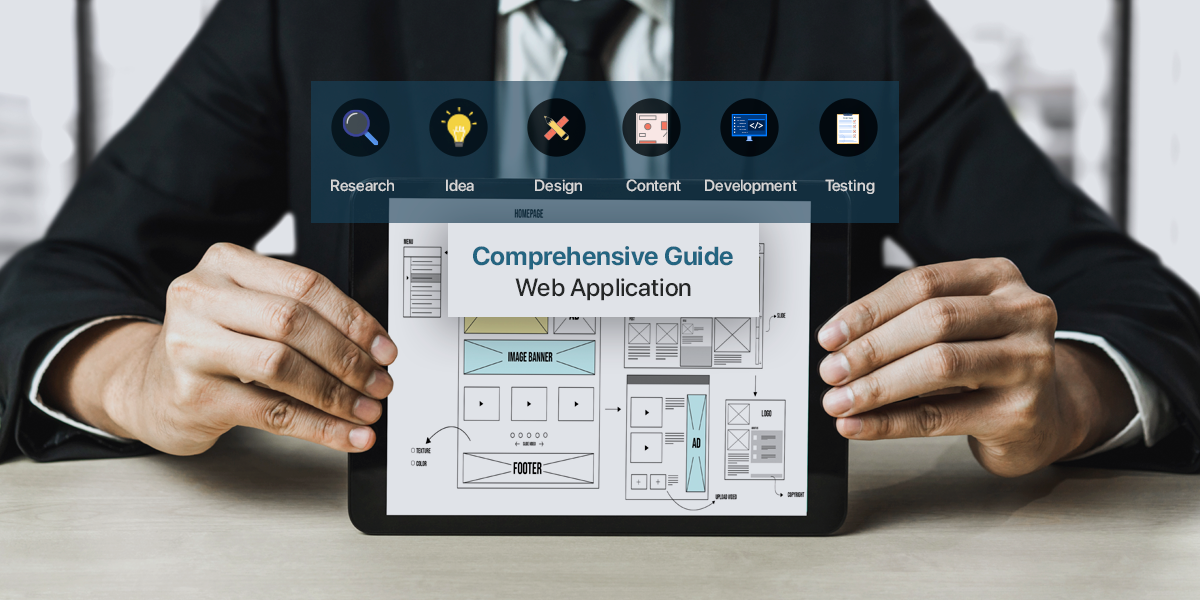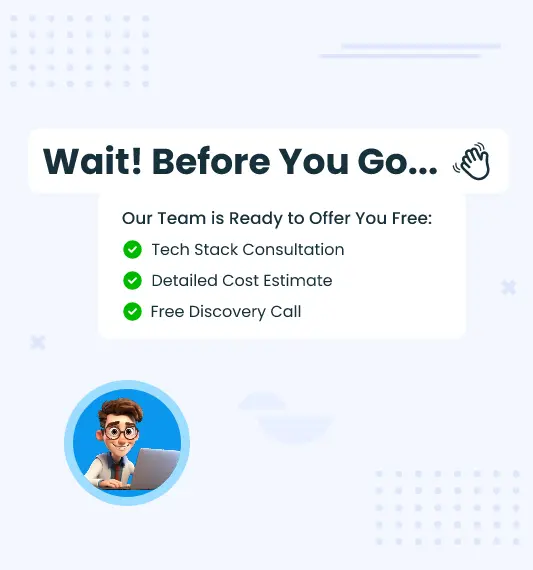Every web application is made up of client-side and server-side code, both of which are crucial components of the efficient architecture that powers the app. Ruby, PHP, Python, JavaScript, and other programming languages are used to create the server-side code.
It is in charge of building the pages that users request, as well as gathering and storing information about user accounts and surfing habits.
HTML, JavaScript, and CSS are all combined to create the client-side code. It responds to user input and requests by sending HTTP requests; it is unable to directly access files on a server.
A web app’s architecture is made up of several application components that allow it to function effectively. But what makes up its parts? Let’s explore:
Components
When it comes to web development, web application architecture is indeed a great option for companies that want to employ cutting-edge programming languages to produce flawless user experiences.
Elements Of Web App Architecture Are Listed Below
UI/UX
Statistics, desktop notifications components, event logs, analytics, and account settings are just a few of the user interface app’s components. They establish the groundwork for user experience and are in charge of designing a web page’s graphics.
Structure
The functionality of a web app that enables users to manage databases and interact with them is determined by its structural elements. Three parts make up the multi-tier architecture:
A database server that retrieves, saves, and makes information available to users.
Business logic and other web app layers are centralized on web application servers. It is created with the aid of Java,.NET, Ruby, Python, Ruby on Rails, and Node.JS.
Users can communicate with the web app utilising the functionalities via a client or web browser. JavaScript, CSS, and HTML were used in its development. There is no requirement for modifications to the device or system software because it already exists within the web browser.
Web Application Architecture Types
The final objective of developing an essential web app relies on how the app functionality is divided between the client and server sides now that you are aware that an architecture describes how distinct web app components communicate.
These are six examples of web app architectural types
A Single-Page Form (SPA)
Nowadays, single-page applications are in high demand because they provide an engaging user experience. SPAs offer a more dynamic user engagement by supplying updated material to the existing web page rather than downloading fresh content from the network each time an individual takes action.
SPAs are made to just request the most essential content components, which means that less application support is needed while they are being developed. Page communications and single-page apps are made possible via AJAX, a JavaScript/XML method for building quick and logical web pages.
You must regularly use Twitter, Facebook, Gmail, and Google Drive. Therefore, these are all illustrations of one-page applications.
Microservices
In contrast to a single monolith software program, the components utilized in this ultralight architectural design are not directly dependent on one another.
Here is how developers may hasten deployment and put out web applications more quickly and effectively. Each microservice in this kind of web app architecture may be created individually, perhaps in a distinct programming language and run independently.
Also, every microservice architecture is designed to meet a particular business or user need you’re working on. It is the best kind of web app architecture since it supports a wide range of cloud, IoT, and mobile platforms and devices.
Several of the most creative and successful businesses in the world, like Netflix, Amazon, Uber, Etsy, and Etsy, have embraced the microservices architecture.
Serverless Technology
With this kind of web application design, the logic of the application may be executed without having to worry about infrastructure-related activities.
In this case, developers outsource servers and infrastructure administration to a third-party supplier of cloud infrastructure services rather than managing the backend server themselves.
If you don’t want to handle or maintain the servers or the hardware you had designed the web app for, this form of web app architecture is perfect.
An Advanced Web Application (PWA)
PWAs are the newest and most well-liked paradigm in web app development. A progressive web app has the features of a native mobile app but has the appearance of a web app. Among the companies who changed their websites into PWAs are Flipkart, Twitter, and the Washington Post.
An app shell that contains the resources a web app requires to load the basic elements of the UI and fill with information using JavaScript is the foundation of a progressive web app. Because of the data caching from the most recent online contact, PWAs may function without an internet connection.
PWAs also develop from web sites in browser tabs. To do this, native apps are persuaded to implement standard JavaScript and HTML in order to create a native-like experience.
Client-side storage APIs, including IndexedDB and Cache Storage API, are essential for creating web apps with fast performance and offline capability.
Web Application Architecture For Widgets
Real-time widget changes are typical; this dynamic, mobile-friendly architecture is renowned for letting users load data without having to reload a website! This style of web application design is ideal for mobile apps since AJAX queries retrieve and deliver huge amounts of information in JSON and HTML. It does, however, also demand the most time for development.
Architecture Of Legacy Html Web Applications
The user receives the whole HTML document upon request under this form of design, which is based on one logic. In accordance, each additional element (and component) responds to the page’s complete load. Legacy HTML is a great choice for static pages, but it is inappropriate for interactive web apps.
Creation Of Web Applications Using Cloud Architecture
The creation of cloud-based web applications is becoming more popular as more firms go through digital revolutions. The web app architecture can be supported by one or even more levels or components using cloud services.
Web Application Architecture Of Amazon
Amazon can handle infrastructure-related chores, freeing developers to concentrate on the display and business logic layers. AWS presently holds the largest market share because of its extensive selection of database solutions, robust partner ecosystem, and range of price levels.
Web Application Architecture Of Azure
Good efficiency, scalable web apps are supported by Microsoft Azure, and a cloud based deployment is supported to a somewhat larger extent.
Conclusion
Zaigo Infotech is web application development company in India that provides a wide range of bespoke websites, online portals, and web apps. To make sure all our solutions are scalable and ready for the future, we employ cutting edge technology, sophisticated frameworks, and tried and true techniques.
We are named as the best web application development company as our in-house team of experts employ cutting edge technology to create durable, secure, and scalable bespoke web apps, and adhere to agile development philosophy to ensure flexibility and quicker delivery.












